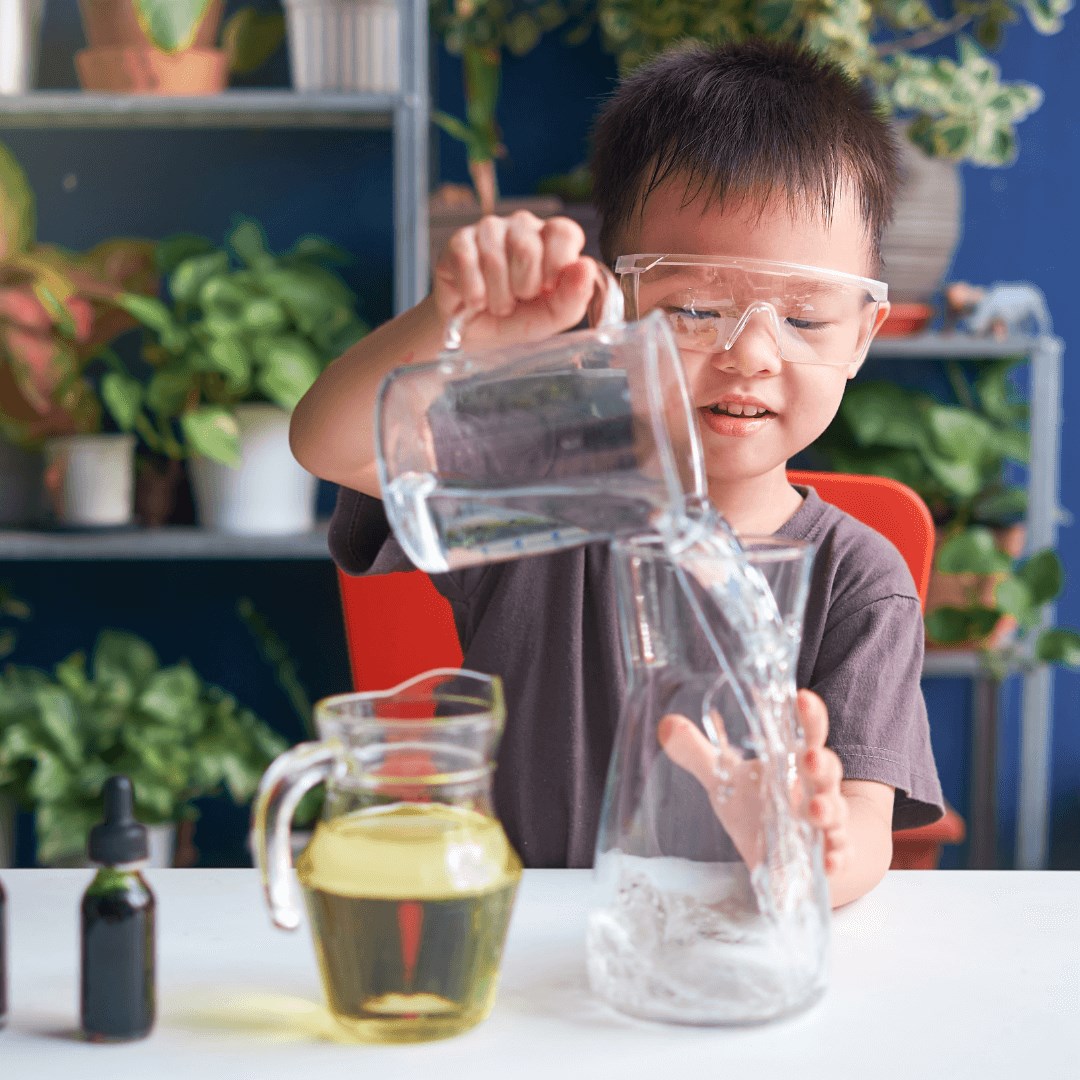
19 February . 2021
Turn Your Kitchen Into A Science Lab
Science is all around us. It’s what makes everything... well... everything. At least, it tries to explain why everything is everything. And best of all, anyone can perform educational science experiments in the safety of their own homes. Specifically, in the kitchen!
Parental Partnership Required
There are two types of scientists: regular and mad. The difference? Parental partnership—regular scientists have it, mad scientists do not. Parental partnership goes beyond mere “parental supervision.” You don’t want to just stand back and watch. These science experiments are for you and your kids to do together. Get messy together. Be awed together. Learn together.
Tricky Parent Bonus: Performing science experiments in the kitchen is also a great way to get kids to help clean. Just explain that part of experimentation is tidying up afterwards.
3 Experiments For Kitchen Scientists
1. Heatless Lava Lamps
Lava lamps work because of the different densities of oil and water. To make your own, start by filling a clear container about 2/3 full of cooking or baby oil. Mix some food coloring with water, and add that to the container. Let the water and oil separate and become still. Plop in a fizzing heartburn relief tablet, and watch the science take over. Carbon dioxide from the tablet is released when it hits the water, pushing drops upwards through the oil. Just like a lava lamp, but without the hot lightbulb.
Little Bins for Little Hands has a great tutorial for this experiment, including more scientific information and experimentation ideas for extra learning.
2. Gravity-Defying Slime
Every kitchen scientist will, at some point in their lives, make slime. It’s fun, squishy, and simple. Water, white glue, food coloring, and borax are all you need. (There are also many non-borax slime recipes on the internet. Use whichever recipe works for your ingredients and safety concerns.) Once you have your slime in a container, it’s time to start defying gravity. Using a rotating solid tube (like a glass or plastic stir stick), twist the center of the slime slowly. The slime will begin to rise up the outside of the tube, seemingly defying the very scientific principle that keeps us from flying off into space! It’s not really, of course, but it sure looks like it. All because slime is a non-newtonian fluid.
Physics Girl’s video has a ton of information on how to do this experiment and the science behind it. (The rest of her videos are amazing too.)
3. Milky Fireworks
Fireworks blow up, and things that explode should be kept out of the kitchen. Luckily, these milky fireworks only look like explosions. Pour some milk into a deep plate or a shallow bowl and add a few drops of food coloring in the center. Use a few colors and make it fancy. Then, dip the end of a cotton swab into dish soap and touch it to the center of the milk. BOOM! All the colors will explode outwards. Keep touching the swab to the milk to cause even more explosions. What you’re witnessing is the result of the soap molecules reacting with the fat molecules in milk.
Cool Science Experiments Headquarters has a really nice page full of instructions and science info. The idea for using the more controlled cotton swab technique, however, came from Physics Girl.
Further Study
The joy of kitchen science is having a “lab” where learning can turn into a fun and anytime experience. One where kids of all ages (adults included) can join together to explore the wonders of all the things that makes our world a unique and valuable part of our crazy universe. The sites we mentioned above have tons of ideas and projects for all age levels, really dig into the science of the experiments, and recommend follow-up experiments for further learning.
All that’s left for you to do is gather supplies, wrangle your little scientists, and start having your own “Eureka” moments.
